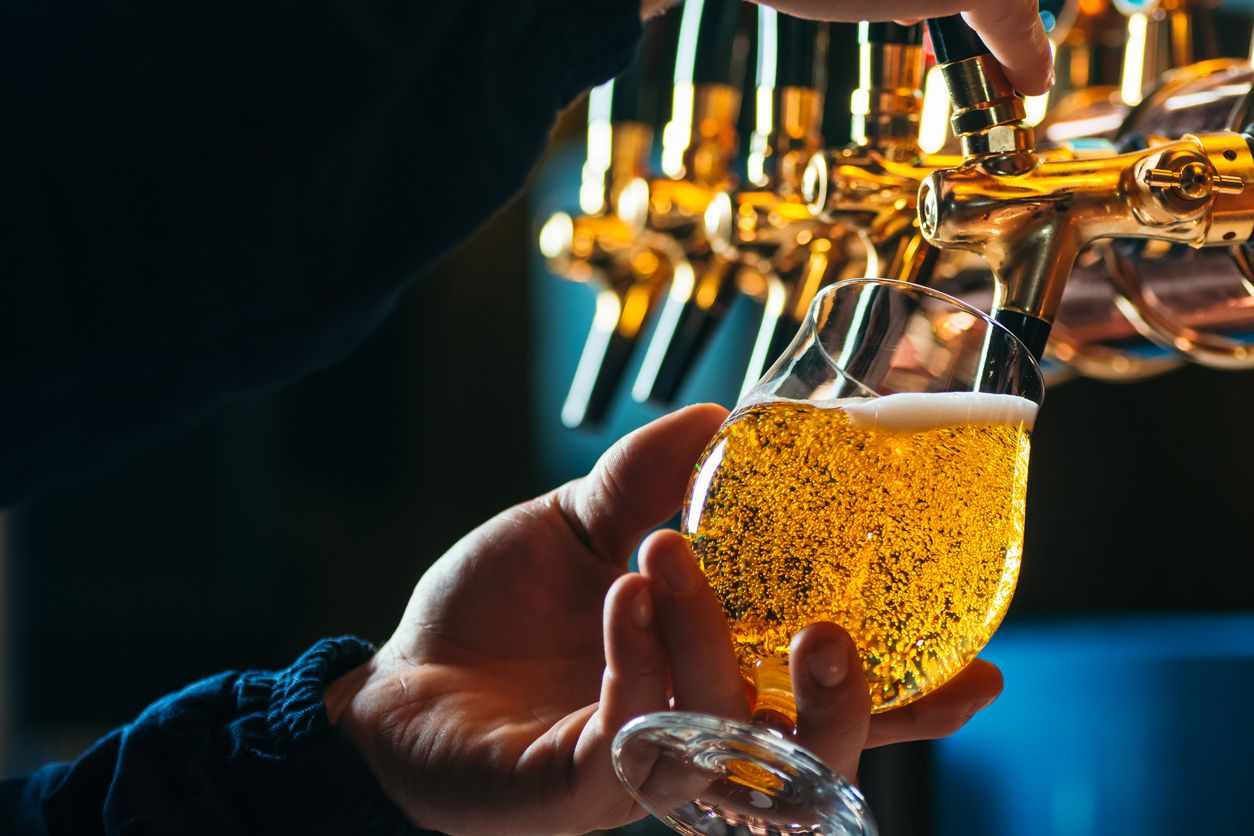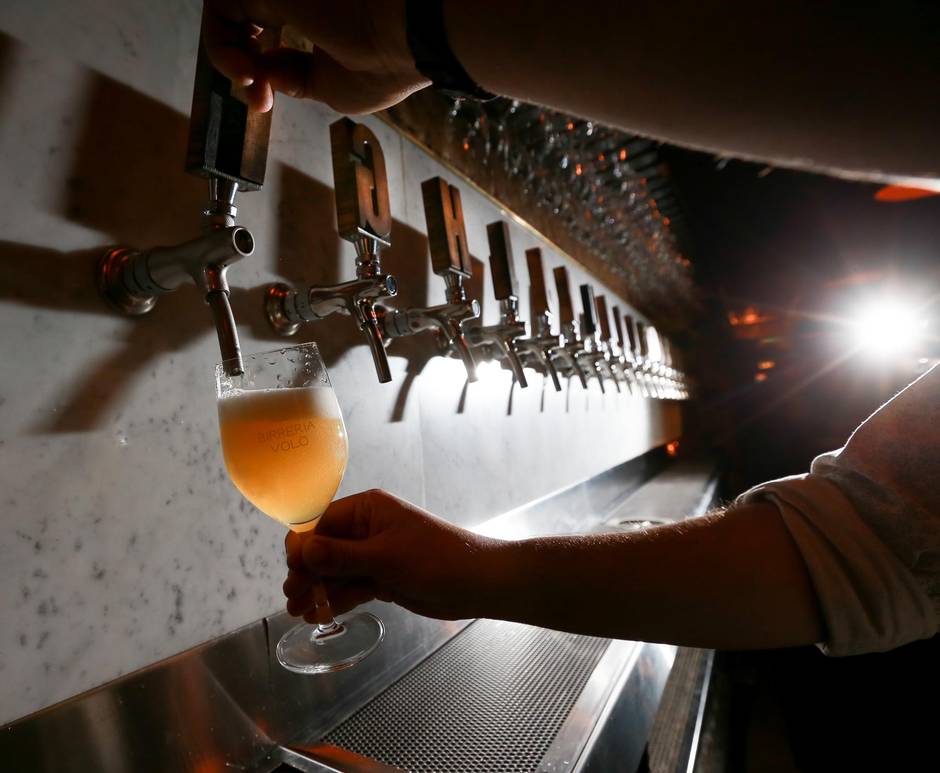28 Oct, 2022
Different Types of Beer
Variety is just one of the great things about beer. With so many different kinds to enjoy and lots of breweries creating interesting takes on each style, there’s always something new to discover. To help you navigate the options among the 800-plus brands The Beer Store offers, here’s a list of must-know beer types and styles. (And since this list will surely inspire exploration, don’t miss our easy tips for escaping your beer comfort zone.)
Lagers
The type of yeast is what makes ales and lagers different, technically speaking. Lagers are made with strains that do their fermenting at cold temperatures. They sit at the bottom of the liquid while they work — that’s why lagers are also called bottom-fermented beers.
For drinkers, however, taste is the key distinction. Unlike ales, lagers tend to be crisp and dry, with a special ability to quench thirst. Here are some of the key players in this delicious arena.
-
- Pale lager: This brew is refreshingly crisp, light-bodied and moderately hoppy, and it pairs easily with a wide variety of foods. No wonder it’s a go-to style for so many people.
- Perfect pairing: Simple pizza, such as a classic margherita
- Pilsner: This term refers to a particular kind of light-coloured, crisp lager that was invented in 19th-century Europe. It took the world by storm, thanks to its thirst-quenching powers. Pilsners are noticeably hoppy and pale gold in colour. They pair deliciously with lots of foods, especially lightly fried dishes such as tempura, calamari and crispy cutlets.
- Perfect pairing: Schnitzel
- Pale lager: This brew is refreshingly crisp, light-bodied and moderately hoppy, and it pairs easily with a wide variety of foods. No wonder it’s a go-to style for so many people.
- Amber & red lager: When brewers use malted barley that’s been toasted until it starts to brown, they get a lager that’s deeper in colour. And it makes a difference to the flavour, too: Amber and red lagers can taste light and crisp like their paler cousins but also contain caramel, toffee and toast aromas like darker beers. There are so many examples of this style that the fun is in finding one that strikes the right balance for you.
- Perfect pairing: Tacos
- Tip: Look for mild reddish Vienna lager, which has delicious toasty notes. It’s an interesting example of this category that you don’t see every day.
- Dark lager: These beauties add depth to Team Lager. While they’re still comparatively light-bodied, they can have the rich aromas you’d expect from a dark beer, including chocolate, coffee, molasses and pumpernickel bread (all of which taste great with it, by the way). So if you like refreshment and complexity, a dark lager can give you the best of both worlds.
- Perfect pairing: Smoked fish on dark bread
- Tip: Some dark lagers are labelled with the German term dunkel, which simply means “dark.” Others are called black lagers.
 Ales
Ales
Unlike lagers, ales are made with yeast strains that prefer to ferment in a warmer environment — closer to room temperature, actually. The yeast floats on the surface while it does its work, so ales are sometimes called top-fermented beers.
As for how these brews taste, we can’t really generalize. There are many strains of ale yeast that add all sorts of flavours, from fruity to earthy, so there’s a huge variety of options to explore in this world, including sweet brown ales and zesty pale wheat beers. Why not sample a range and see for yourself?
-
- Cream ale: These suds are pale in colour, light in flavour and not too bitter. If you didn’t know better, you might think a cream ale was actually a pale lager. Luckily, it’s just as refreshing and equally versatile when it comes to pairing with food.
- Perfect pairing: Salad with grilled chicken
- Tip: Kolsch is another kind of pale, light-bodied ale that could pose as a lager.
- Pale ale: English-style pale ales (also known as bitters) are malty and earthy. American-style pale ales have more of a hoppy bite, sometimes with citrus overtones. Belgian-style pale ales are sweeter and less hoppy than the other two, but they can be spicy. So what do all pale ales have in common? They’re beautifully balanced and taste great with a lot of different foods.
- Perfect pairing: Hamburgers
- Tip: Pale ales are sometimes called blonde or golden ales, and American-style pale ale is often referred to by its acronym, APA.
- Amber & red ale: Deeper in colour and more richly flavoured than pale ale, red and amber ales will typically taste like caramel, dried fruit or even a hint of coffee. They’re great with slow-cooked and roasted foods (both meat and vegetable).
- Perfect pairing: Jerk chicken
- Tip: Belgian-style red ale is a very different kind of beer that’s more sour than sweet.
- Cream ale: These suds are pale in colour, light in flavour and not too bitter. If you didn’t know better, you might think a cream ale was actually a pale lager. Luckily, it’s just as refreshing and equally versatile when it comes to pairing with food.
- India pale ale (IPA): For people who prefer their beer bitter, this is the style to go for. India pale ales originated in England during the 19th century and were made extra strong and hoppy to survive the ocean journey to India. The powerful and often fruity flavours of IPAs make them a great pairing for foods that feature any combination of fat, spiciness and fruit.
-
- Perfect pairing: Lamb rogan josh or other meaty curry
-
- Dark ale: Dark ale are either English-style, which are sweet and malty, or Belgian-style, which are a little drier and possibly fruity. Either way, you’ll detect caramel notes, potentially some spice, and sweet fruit aromas, such as raisin or baked apple. Sink into a comfy chair and savour these brews.
- Perfect pairing: Roast beef au jus
- Brown ale: If an English-style ale is especially sweet and nutty tasting, it’s referred to as a brown or nut brown ale. These are terrific beers for pairing with all sorts of rich-and-sweet foods, from saucy ribs to indulgent desserts.
- Perfect pairing: Pecan pie
- Wheat beer: When a brewer adds wheat to the mix, it gives the beer a foamy head, a silky texture and a special kind of sweetness. In fact, some wheat beers give off a distinctive aroma of banana or bubble gum. Wheat beers range in colour from pale straw to deep brown, and they’re all refreshing.
- Perfect pairing: Thai mango salad
- Tip: Hefeweizen is the German term for pale wheat beers; in Belgium, they’re called witbiers or blanches. All of these simply mean “white beer,” so if you see them on a label, you’ll be enjoying a hazy, pale, sweetly refreshing wheat beer that was made for patio time.
- Belgian-style ale: These brews are in a world of their own, because the term is used for many different styles. Belgium may be a tiny European country, but it has perfected an impressive variety of ale styles, from sour red and brown ales to powerful abbey beers, which pay tribute to the brews first developed by the region’s monks. Nowadays, lots of brewers around the globe make their own homages to this category.

